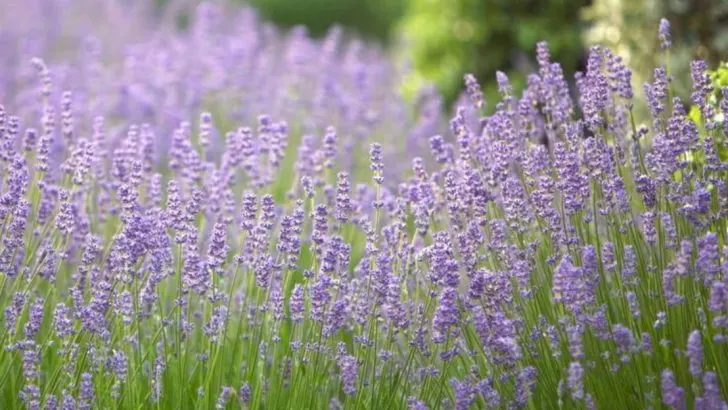A pest-free garden doesn’t have to rely on harmful chemicals. Many plants have natural properties that help repel insects and pests, creating a healthier, more sustainable garden environment. By strategically planting these pest-repelling species, you can naturally protect your crops and flowers while promoting a biodiverse ecosystem.
From strong-smelling herbs like mint and lavender to bright blooms like marigolds and petunias, these plants are known for their ability to deter a wide range of unwanted insects, such as mosquitoes, aphids, and flies. Not only do they keep pests at bay, but they also add beauty and fragrance to your garden.
In this article, we’ll explore 23 plants that naturally repel insects and pests, helping you cultivate a healthy, thriving garden without the need for harsh chemicals.
Lavender
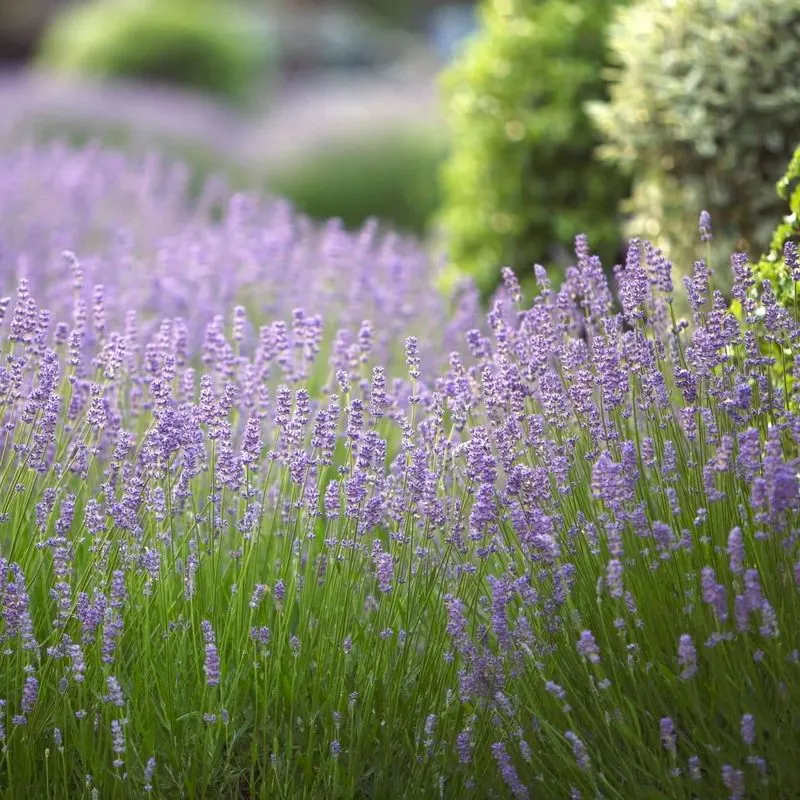
Known not only for its calming fragrance but also for its pest-repelling properties, lavender is a gardener’s friend. The aromatic oils deter mosquitoes, flies, and various other pests, making it a wonderful addition to borders and pathways. Planting lavender near seating areas can enhance your outdoor relaxation by keeping bugs at bay. Additionally, its beautiful purple flowers attract beneficial pollinators, such as bees, which aid in the overall health of your garden. Regular pruning ensures that the plant remains bushy and continues to produce an abundance of flowers, while also maintaining its shape. Consider using dried lavender in sachets to extend its benefits indoors.
Basil
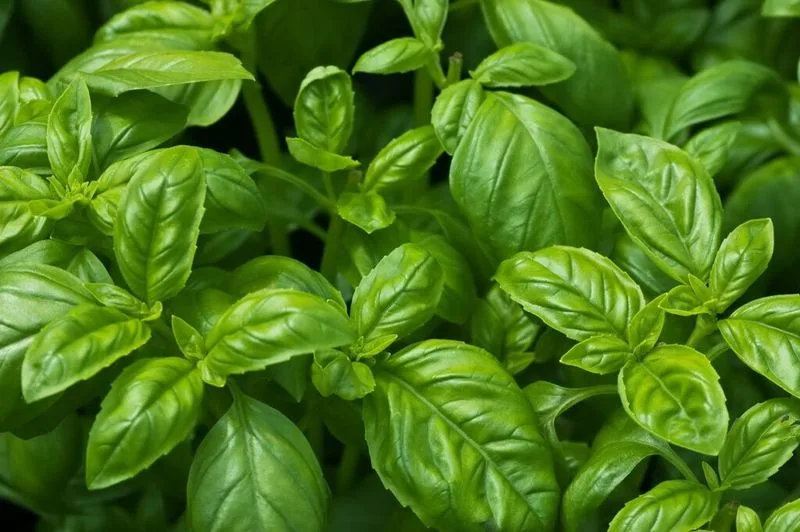
Basil is a versatile herb that not only enhances culinary dishes but also repels common garden pests. Its strong scent is unpleasant to mosquitoes and flies, while its presence deters aphids, beetles, and whiteflies. Growing basil near tomato plants can provide mutual benefits, as it may help improve the flavor of tomatoes while keeping harmful insects away. Regular harvesting of basil leaves encourages bushier growth, providing a continuous supply of fresh ingredients for your kitchen. This herb thrives in warm, sunny areas with well-drained soil, making it an easy and effective choice for the home gardener seeking natural pest control solutions.
Marigold
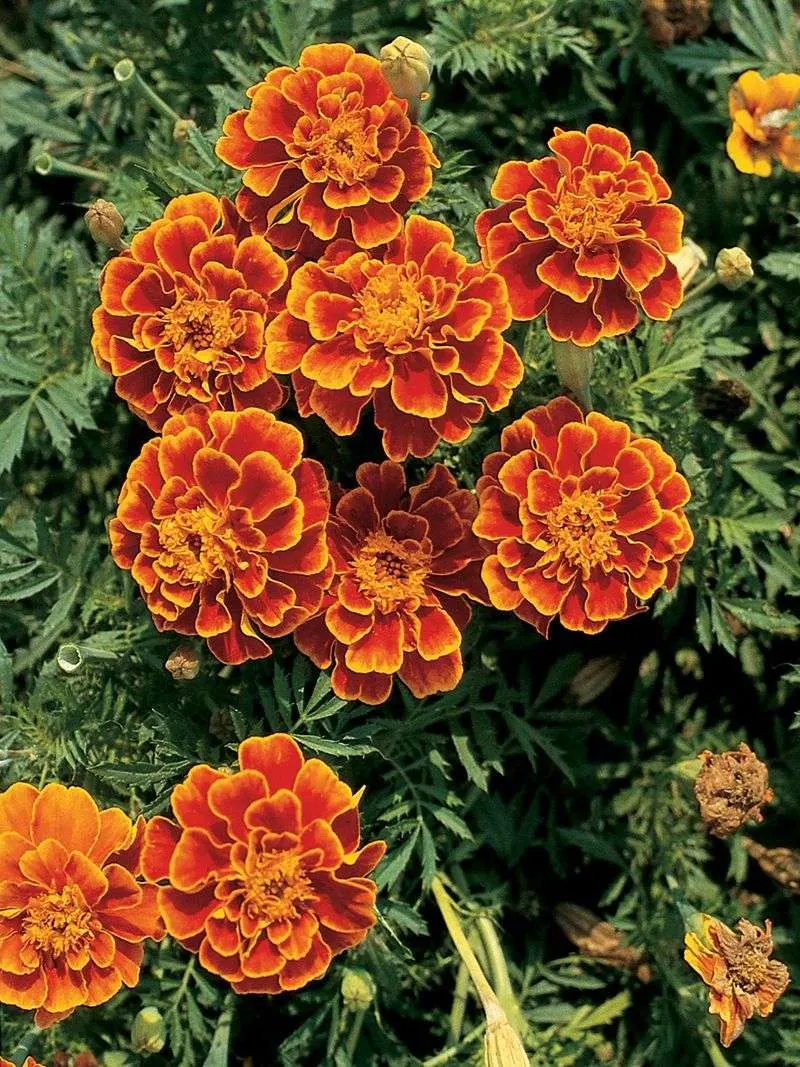
Marigolds are celebrated for their vivid blooms and their ability to repel a variety of insects. These cheerful flowers emit a scent that deters mosquitoes, nematodes, and certain beetles. Planting marigolds around vegetable gardens can protect crops from potential pests, while adding a splash of color. They are particularly effective in repelling nematodes, which can damage plant roots. As a low-maintenance plant, marigolds thrive in sunny spots and require minimal care, making them a favorite choice for those looking to enhance their garden’s resilience. Deadheading spent blooms can encourage continuous flowering throughout the growing season.
Rosemary

Rosemary is more than just a culinary herb; it serves as a formidable deterrent for many pests. Its aromatic leaves repel mosquitoes, cabbage moths, and carrot flies, among others. Growing rosemary near cabbage or carrots can help protect these plants from troublesome insects. This perennial herb thrives in well-drained soil and full sunlight, requiring only occasional watering once established. Regular pruning promotes bushy growth and a more abundant harvest for culinary uses. Incorporating rosemary into your garden not only aids in pest control but also provides fresh, fragrant sprigs for your cooking adventures.
Mint
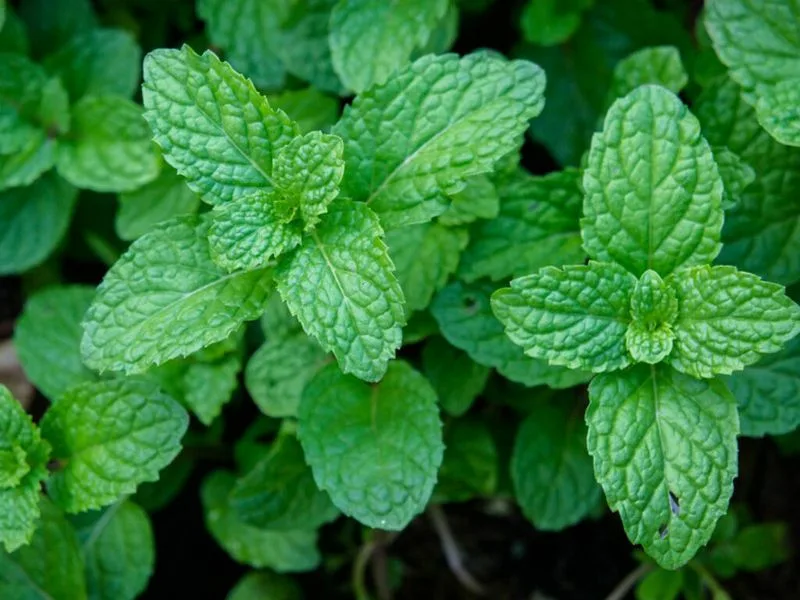
Mint’s invigorating scent is not only refreshing but also helps keep pests at bay. This herb is particularly effective against ants, mosquitoes, and spiders. However, mint is a vigorous grower and can quickly take over garden space, so planting it in containers or confined areas is recommended. The plant thrives in partial shade and moist soil, producing a continuous supply of fragrant leaves. Regular pruning helps maintain its size and encourages the growth of new shoots. Mint’s versatility extends beyond pest control, as it can be used to make refreshing teas and flavor various dishes.
Catnip
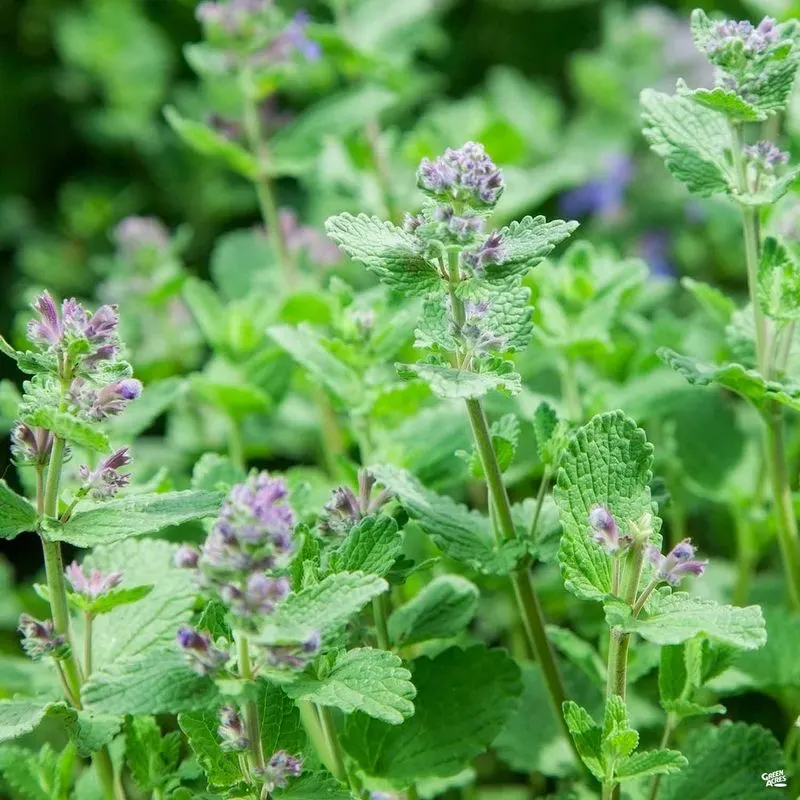
While cats may adore it, catnip is less appealing to pests. The plant is known to repel mosquitoes, aphids, and even cockroaches. This makes catnip a valuable addition to any garden seeking natural pest control methods. It grows well in sunny locations with well-drained soil and requires little maintenance. The plant’s grey-green foliage and white flowers add subtle beauty to garden beds. For those with feline companions, planting catnip can offer dual benefits: pest control and a playful treat for your cats. Just be prepared for frequent visits from neighborhood cats if they discover your stash.
Chrysanthemums
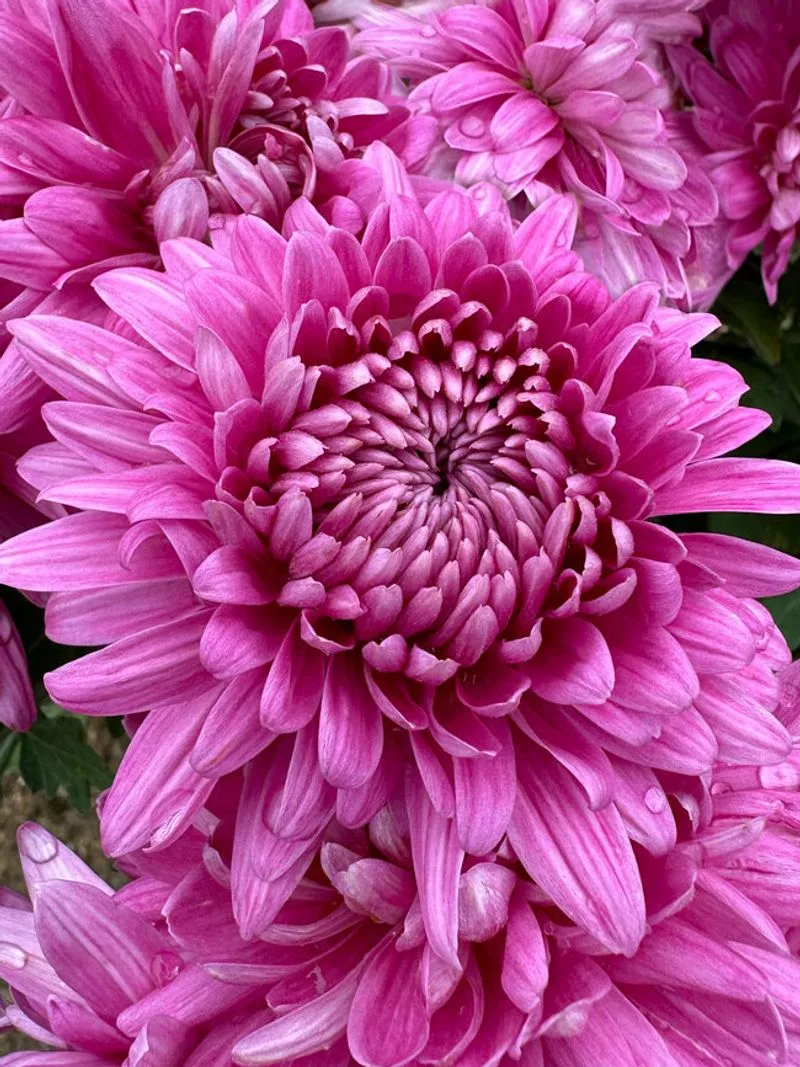
Chrysanthemums, with their stunning array of colors, offer more than just aesthetic appeal. They contain pyrethrin, a natural insecticide that repels mosquitoes, ticks, fleas, and more. Planting chrysanthemums around the perimeter of your garden can create a protective barrier against a wide range of pests. This hardy plant flourishes in sunny locations and well-drained soil, requiring regular watering to maintain its vibrant blooms. In addition to their pest-repelling properties, chrysanthemums make excellent cut flowers, adding a touch of elegance to indoor arrangements. Their seasonal blooms ensure your garden remains colorful well into the autumn months.
Lemongrass

Lemongrass is a tropical plant famous for its lemony scent, which is known to repel mosquitoes and other flying insects. It’s a fantastic addition to gardens, especially in areas where mosquitoes are a common nuisance. The plant thrives in warm climates, requiring full sun and well-drained soil. Once established, lemongrass requires minimal care, aside from occasional pruning to remove dead leaves. Its tall, graceful blades add texture and movement to garden landscapes. Furthermore, lemongrass can be harvested for its flavorful stalks, often used in Asian cuisine to add a citrusy zing to dishes and teas.
Thyme
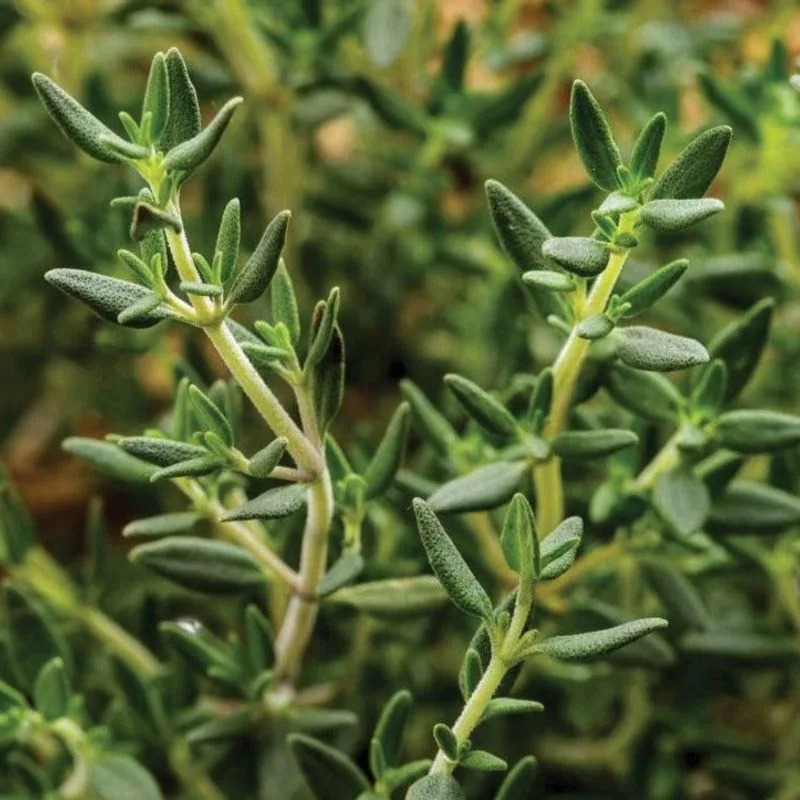
Thyme is a resilient herb known for its earthy aroma and pest-repelling qualities. It naturally deters cabbage worms, whiteflies, and aphids, making it an ideal companion for cabbage and other vegetables. Thyme thrives in sunny, dry areas with well-drained soil, requiring little maintenance once established. Regular harvesting encourages bushy growth and ensures a steady supply of fresh sprigs for culinary use. Its compact form makes it suitable for borders or rock gardens, offering both ornamental and practical benefits. Thyme’s versatility extends beyond the garden, as its leaves can enhance the flavor of various dishes.
Petunias

Petunias are not only visually appealing but also serve as a natural pest deterrent. These vibrant flowers help repel aphids, tomato hornworms, and leafhoppers. Easy to grow, petunias thrive in sunny spots and require well-drained soil. They are perfect for hanging baskets, containers, or garden beds, adding a splash of color while keeping pests at bay. Regular deadheading ensures continuous flowering throughout the growing season. Besides their pest-repelling properties, petunias attract beneficial pollinators, promoting a healthy garden ecosystem. Their cheerful blooms are sure to brighten any outdoor space, making petunias a popular choice for many gardeners.
Nasturtiums
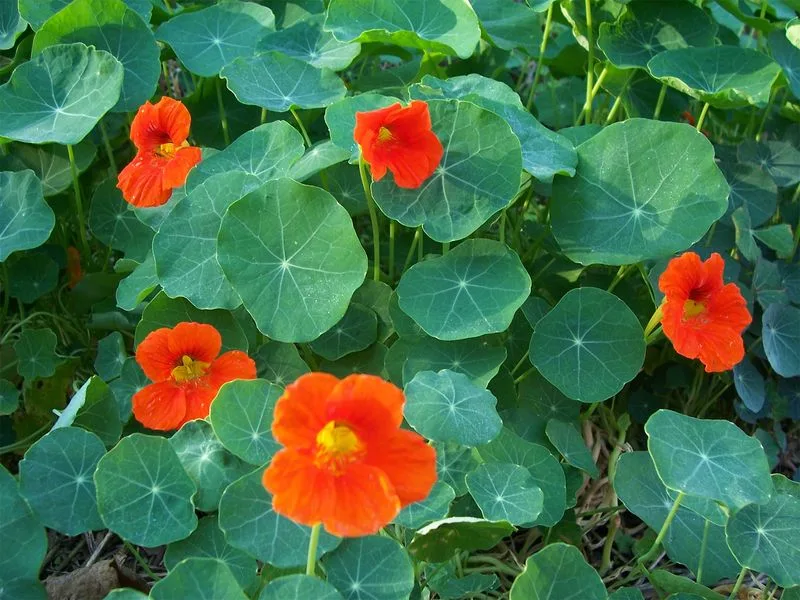
Nasturtiums are an excellent choice for repelling aphids, whiteflies, and squash bugs. These cheerful, trailing plants thrive in poor soils and require minimal care, making them ideal for novice gardeners. Nasturtiums not only protect your garden but also produce edible flowers and leaves with a peppery taste, perfect for salads. Their vibrant blooms attract pollinators, supporting a healthy garden ecosystem. Plant them near vegetable gardens to deter pests and enhance the growth of companion plants. Regular watering and full sun exposure ensure robust growth and continuous flowering, making nasturtiums a versatile and attractive addition to any garden.
Fennel
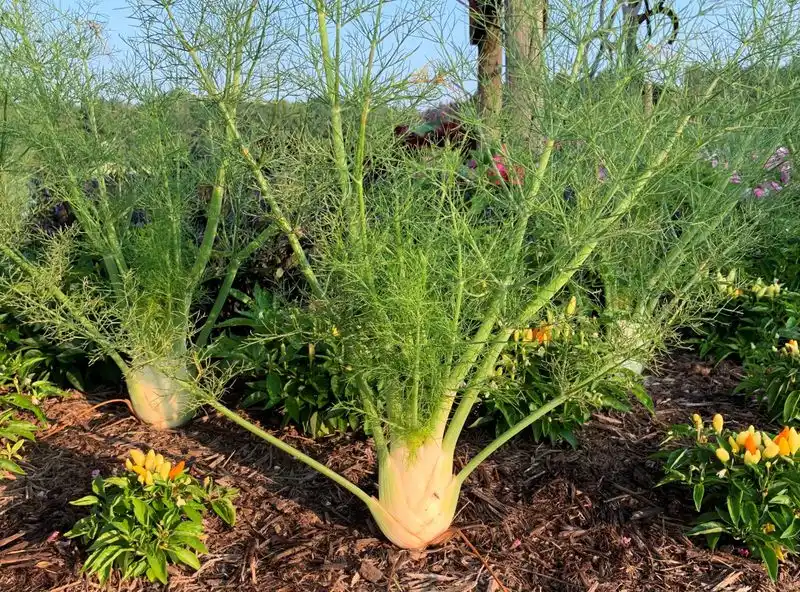
Fennel, with its feathery foliage and distinctive aroma, is known to repel slugs and snails. This herbaceous perennial thrives in full sun and well-drained soil, often reaching impressive heights. While it deters certain pests, fennel attracts beneficial insects like ladybugs and lacewings, which help control aphid populations naturally. It’s best planted in its own space, as it can inhibit the growth of nearby plants. Beyond its pest-repelling qualities, fennel offers culinary uses; its seeds and fronds add a sweet, anise-like flavor to dishes. Regular harvesting encourages a bushier growth habit, ensuring a continual supply of flavorful fronds.
Garlic
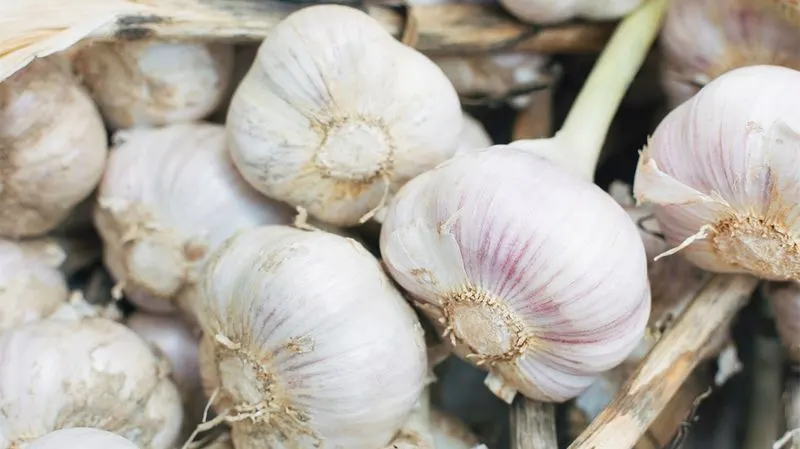
Garlic is not just a kitchen staple; it’s also an effective natural pest deterrent. Its pungent smell repels aphids, spider mites, and Japanese beetles. Planting garlic near roses, tomatoes, or peppers can help protect these plants from potential harm. This hardy bulb thrives in sunny locations with well-drained soil, requiring minimal care once established. Harvesting typically occurs in midsummer, providing fresh bulbs that enhance culinary creations. Additionally, garlic’s antimicrobial properties benefit soil health, contributing to a more vibrant garden ecosystem. Planting garlic is a simple yet effective way to bolster your garden’s defenses against unwanted pests.
Oregano
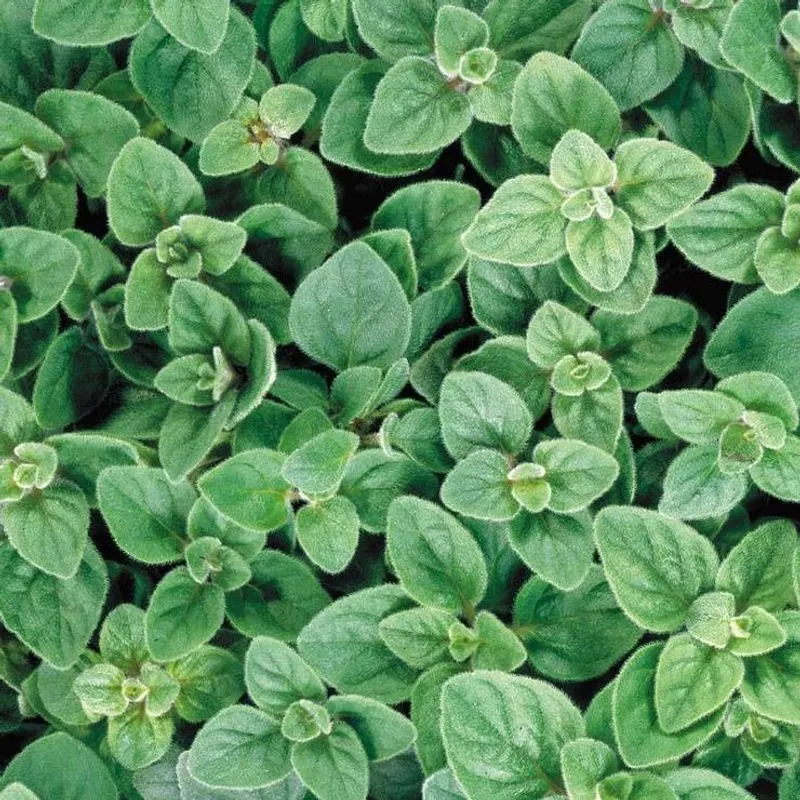
Oregano, celebrated for its culinary uses, is also a potent pest deterrent. Its aromatic leaves repel a variety of pests, including aphids and spider mites. Thriving in sunny, well-drained areas, oregano requires little maintenance and can enhance the flavor of many dishes. Regular pruning encourages bushy growth and a plentiful harvest, ensuring a steady supply for your kitchen. This herb is a perfect companion plant for vegetables such as tomatoes and peppers, providing mutual benefits while keeping harmful insects at bay. Incorporating oregano into your garden design adds both functionality and visual appeal to outdoor spaces.
Dill
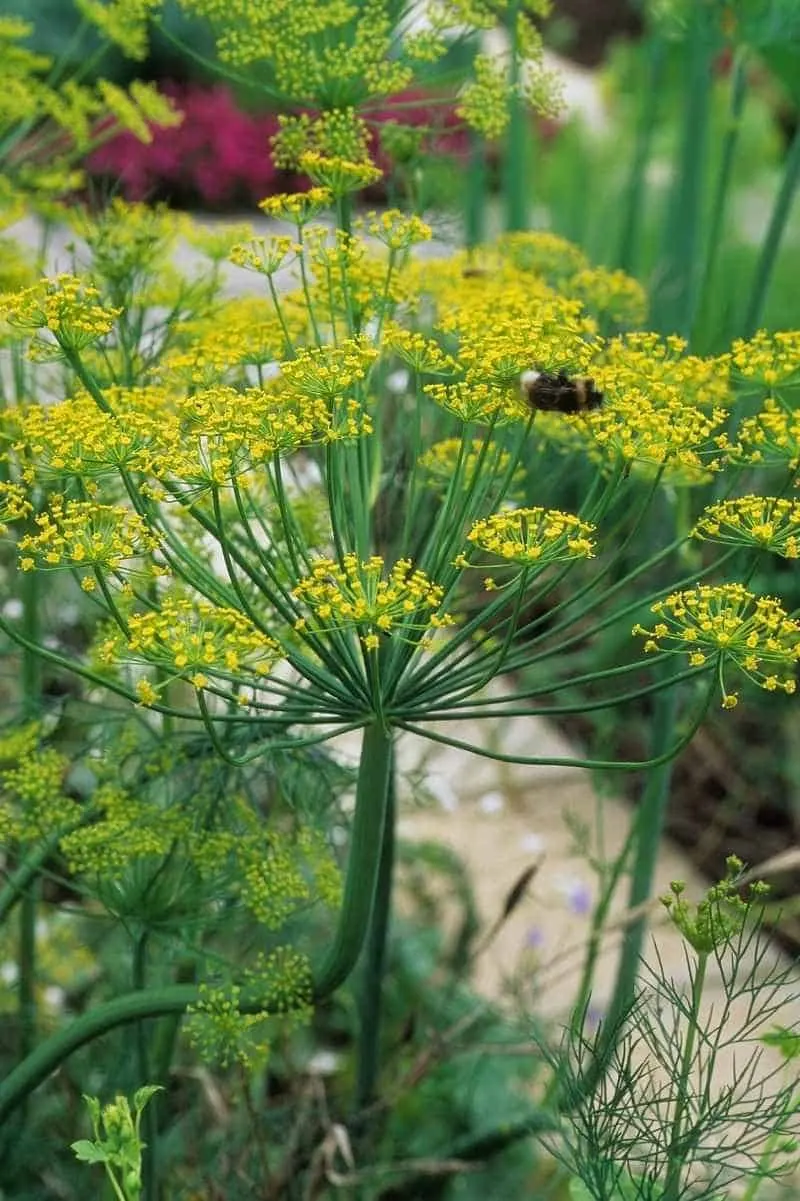
Dill is a versatile herb that repels pests like aphids, spider mites, and cabbage worms. It thrives in sunny areas with well-drained soil, growing tall and producing delicate yellow flowers. Dill not only deters pests but also attracts beneficial insects like ladybugs and parasitic wasps, which help control garden pests naturally. Planting dill near cabbage, broccoli, or other vegetables can enhance their growth and offer protection from common insect threats. Additionally, dill’s feathery foliage adds a soft texture to garden beds, while its seeds and leaves provide culinary uses, adding flavor to pickles, salads, and sauces.
Sage
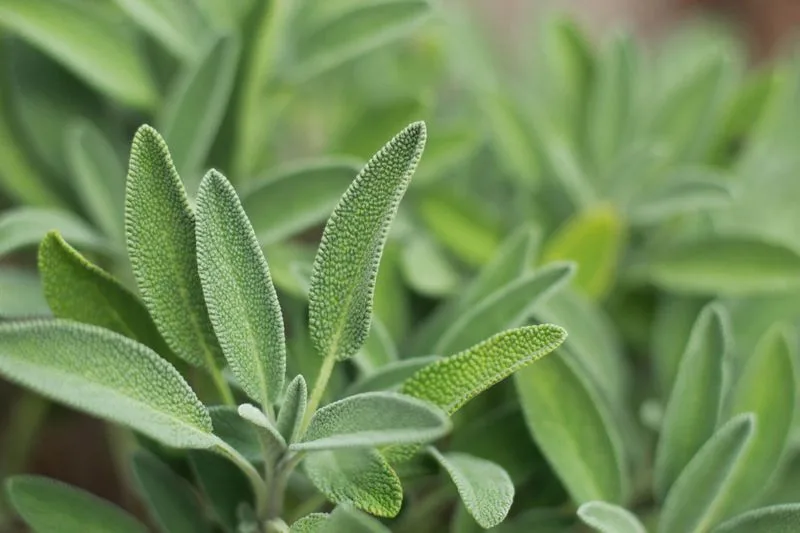
Sage is a robust herb known for its earthy aroma and pest-repelling properties. It effectively deters cabbage moths, carrot flies, and slugs. Thriving in sunny, well-drained conditions, sage requires minimal maintenance once established. Its silvery leaves and purple flowers add a touch of elegance to garden designs, making it both a functional and ornamental choice. Regular pruning encourages a denser growth habit and a more abundant harvest for culinary uses. Pairing sage with vegetables like carrots and cabbage can enhance growth and protect them from harmful insects, making it a valuable addition to any garden.
Bay Leaf
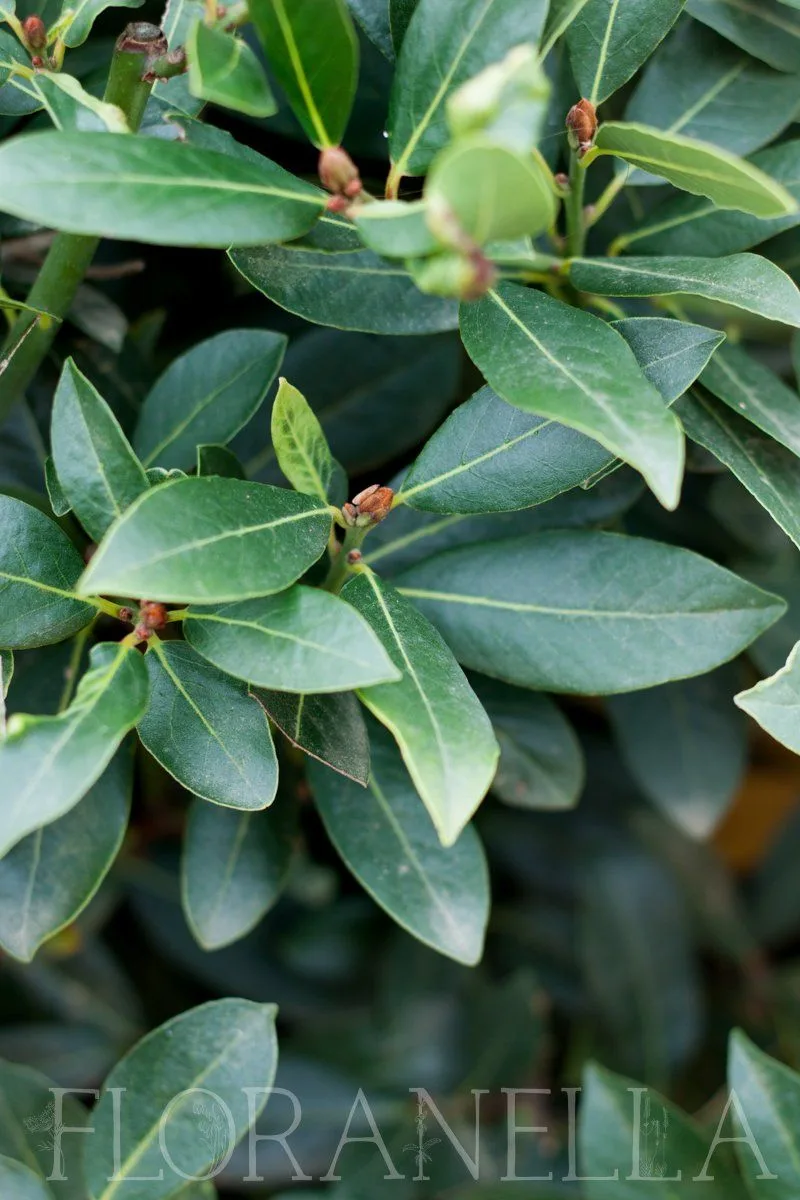
Bay leaf, often used in cooking, is also effective at repelling pests like moths, weevils, and flies. This aromatic plant thrives in sunny locations with well-drained soil, requiring only occasional watering. Its glossy, evergreen leaves add a touch of sophistication to garden designs, while its pest-repelling properties protect nearby plants. Regular pruning helps maintain the tree’s shape and encourages new growth, ensuring a steady supply of fresh leaves for culinary applications. Incorporating bay leaf into your garden not only enhances its aesthetics but also provides a natural solution to common pest problems, promoting a healthier garden environment.
Parsley
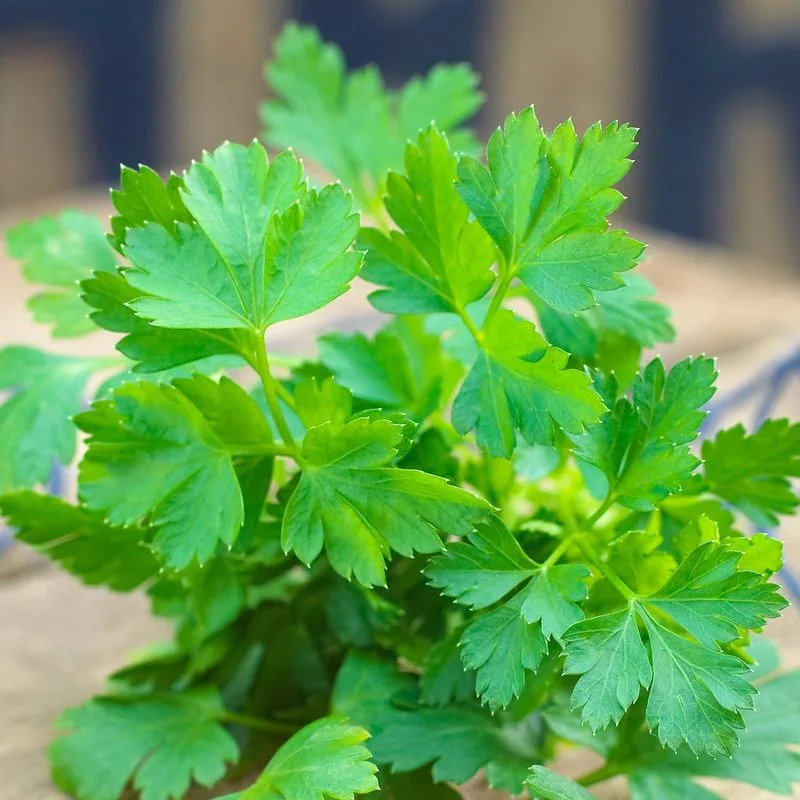
Parsley is not only a popular culinary herb but also a natural pest deterrent. Its strong scent repels aphids and carrot flies, making it an ideal companion for carrots and roses. Thriving in sunny spots with well-drained soil, parsley requires regular watering to maintain its lush growth. Planting parsley near vegetables can enhance their health while keeping harmful insects at bay. This biennial herb offers fresh, flavorful leaves for culinary uses, adding a vibrant touch to salads and garnishes. Regular harvesting encourages new growth, ensuring a continuous supply of parsley for your kitchen and garden needs.
Coriander
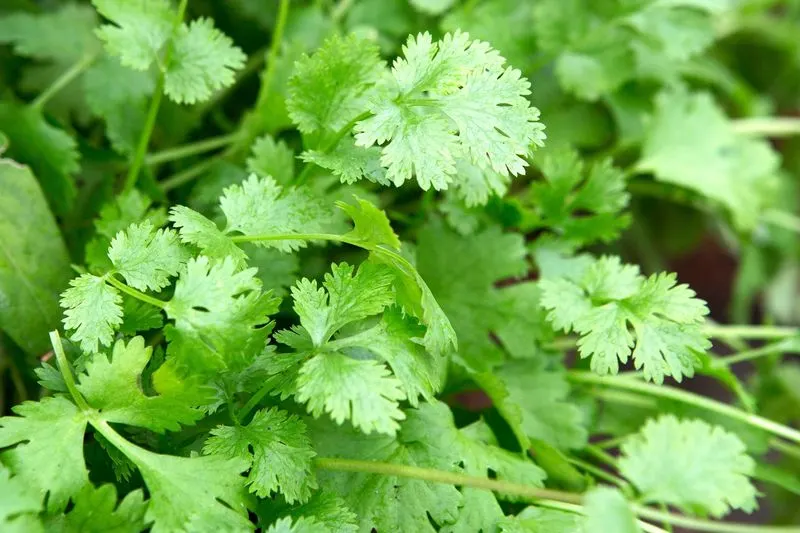
Coriander, also known as cilantro, is a versatile herb that repels aphids, spider mites, and potato beetles. Its strong aroma deters pests while attracting beneficial insects like hoverflies and ladybugs, which help control pest populations. Thriving in sunny areas with well-drained soil, coriander requires regular watering to maintain its health. Planting coriander near vegetables such as tomatoes or peppers can offer mutual benefits and enhance their flavors. This herb’s leaves and seeds are used in various culinary dishes, adding a unique, citrusy flavor. Regular harvesting encourages bushy growth and ensures a steady supply for your kitchen.
Tansy

Tansy is a hardy perennial known for its ability to repel ants, fleas, and flies. Its bold, yellow flowers add visual interest to garden beds, while its aromatic foliage deters a variety of pests. Tansy thrives in sunny locations with well-drained soil, requiring minimal maintenance once established. It’s best planted away from vegetable gardens, as it can inhibit the growth of certain plants. In addition to its pest-repelling properties, tansy attracts beneficial insects like ladybugs and predatory wasps, supporting a balanced garden ecosystem. Regular pruning helps maintain its size and promotes a tidier appearance.
Rue
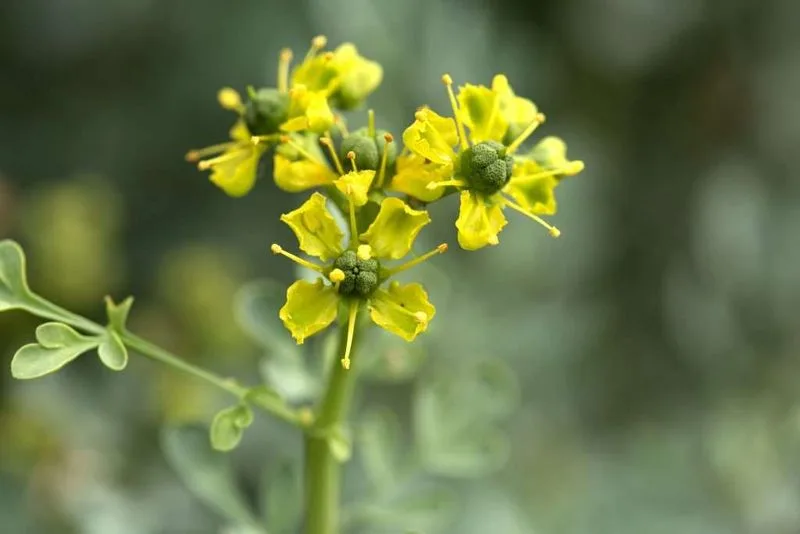
Rue is an aromatic herb known for its pest-repelling properties. It deters flies, mosquitoes, and beetles, making it a valuable addition to any garden seeking natural pest control. The plant thrives in sunny locations with well-drained soil and requires minimal care once established. Its bluish-green foliage and yellow flowers add subtle beauty to garden designs, while its strong scent keeps pests at bay. Rue’s ornamental qualities make it a popular choice for borders and rock gardens. Regular pruning helps maintain its shape and encourages a denser growth habit, contributing to a healthier garden environment.
Borage
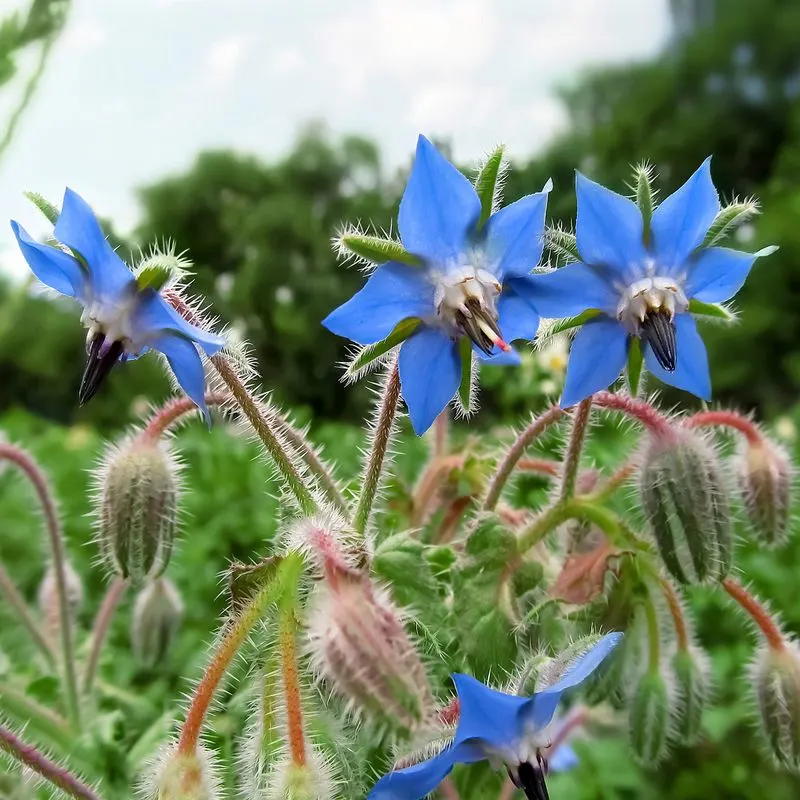
Borage is an excellent plant for repelling hornworms and other common pests. Its striking blue flowers not only add beauty to any garden but also attract beneficial pollinators like bees and butterflies. Borage thrives in sunny areas with well-drained soil, requiring minimal maintenance once established. Its leaves and flowers are edible, offering a cucumber-like flavor that can enhance salads and drinks. Planting borage near tomatoes or strawberries can enhance their growth and protect them from harmful insect threats. Regular deadheading encourages continuous flowering, ensuring a vibrant and productive garden throughout the growing season.
Rose Geranium
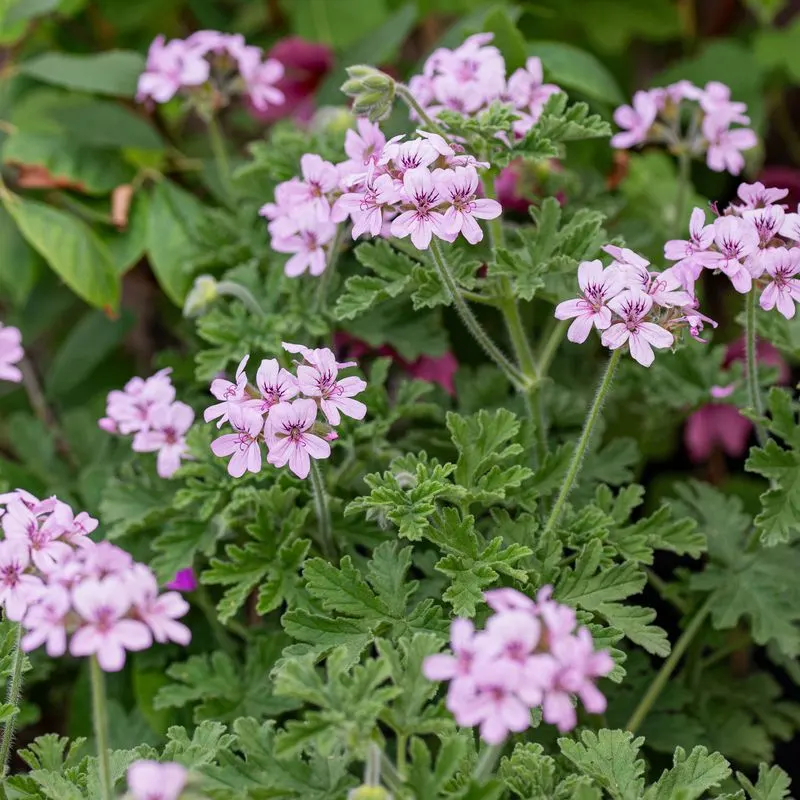
Rose geranium is a delightful plant known for its rose-scented leaves and pest-repelling abilities. It effectively deters mosquitoes, fleas, and other insects, making it perfect for areas where people gather. Thriving in sunny, well-drained locations, rose geranium requires regular watering to maintain its health. Its attractive foliage and delicate pink flowers add beauty to gardens and containers, enhancing outdoor spaces. Beyond pest control, the plant’s aromatic leaves can be used in potpourris and teas, offering a fragrant touch to your home. Regular pruning encourages bushy growth and ensures a continuous supply of leaves for various uses.

